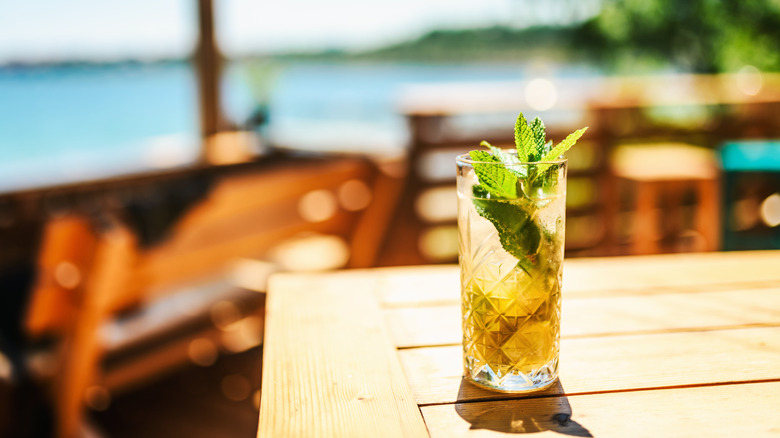How Mojitos Unexpectedly Became Italy's Favorite Drink At One Point
When you think of Italian cocktails, mojitos probably aren't the first thing that comes to mind. Italy's cocktail scene is brimming with vibrant options, from a classic spritz to the Italian Paloma. With so many great drinks on the menu, it's pretty easy to overlook the unassuming mojito. Yet, you'd be surprised to learn that, at one point, the mojito had reigned supreme in bars throughout Italy, outshining even the trendier options like the Negroni. Its popularity was so overwhelming that if you were to ask any bartender or cocktail enthusiast about the best drink in Italy roughly two decades ago, they'd tell you in no uncertain terms that it's the mojito.
Although it's no longer as popular as it once was, this odd case is still very much worth looking into, considering how un-Italian the mojito is. Plus, its sweetness also challenged the established tastes of Italians of that time, who typically leaned towards bitter drinks made from aperitifs like Campari and Aperol. So, what exactly happened here?
The real reason why the mojito was an Italian classic
Nestled in the heart of the Mediterranean, Italy's culture and way of life are intimately tied to its many beaches and coasts. Paired with scorching summer temperatures that often soar above 89 degrees Fahrenheit (32 degrees Celsius), it's no surprise that Italians like their drinks to be refreshing and cooling. That's mostly how the mojito caught the attention of the masses at the time. The icy concoction of rum, mint, sugar, lime juice, and soda seems tailor-made for Italy's many beachside bars.
A second reason for the mojito's Italian conquest lies in the widespread availability of its key ingredients: mint and Cuban rum. Their ease of access turned this cocktail into a nearly ubiquitous item on bar menus across the country. Notably, in the early 2000s, rum producers ran numerous marketing campaigns for the spirit in Italy, which inadvertently boosted its popularity even further.
Lastly, while the mojito's origins trace back to Cuban mixology, the drink served in Italy wasn't always done with the "classic" mojito recipe. Bartenders have experimented with the recipe, giving it some uniquely Italian twists, like adding Mirto to it. These twists didn't manage to maintain the mojito's popularity when newer cocktails, like the Aperol spritz, made it onto the scene. Sadly, the mojito fell out of popularity in the following years. But even today, you can still order a pretty tasty glass of Italian-style mojito if you ever decide to hit the Italian beach!

